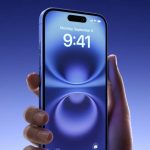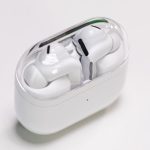High-quality, sound sleep, in the proper duration, is fundamental to mental and physical well-being. Yet, it’s something that many people struggle with, due to medical disorders, work schedules or a lifestyle that keeps them going 24/7.
According to the American Sleep Apnea Association’s “State of Sleep Health in America in 2022,” 70% of adults obtain insufficient sleep at least one night a month, while 11% have insufficient sleep every night. The report also estimated that 50 million to 70 million Americans suffer from sleep-related problems.1
Sleep problems and sleep disorders not only lead short-term issues like problems with alertness, mood and short-term memory, but also contribute to long-term chronic issues, including high blood pressure, cognitive impairment, heart disease and stroke.2 This is why setting aside one hour and 40 minutes to watch Andrew Huberman’s sleep toolkit video, above,3 will be time well-spent.
Huberman is a neuroscientist and tenured professor in the department of neurobiology at Stanford University School of Medicine, and the video details how to effectively harness light and darkness, as well as other factors, and to fall asleep faster and stay asleep longer.
Factors That Influence Your Sleep
Getting a good night’s rest isn’t always as simple as lying in bed and closing your eyes, as many factors influence your nightly sleep patterns and circadian rhythm. However, the main tools that control when you are awake and when you are asleep include:4
Light and darkness
Temperature
Food, including what you eat, when you eat and the amount you eat
Exercise
Caffeine, supplements and body temperature can also powerfully modulate your sleep. In a “perfect” 24-hour cycle, one of the first things that happens when you wake up in the morning is that your body temperature increases.
This temperature increase leads to a release in the hormone cortisol, which is often referred to as a stress hormone but also has other functions, including enhancing your immune system, increasing your metabolism and enhancing your ability to focus. Huberman explaines:5
“Cortisol is often demonized and considered this bad thing. And, indeed, you don’t want cortisol to be chronically or consistently elevated throughout the day or night. But you do want cortisol to reach its peak early in the day right about the time you wake up.
One way that you can ensure that that cortisol peak occurs early in the day, right about the time you wake up, is to view bright light, ideally from sunlight, within the first 30 to 60 minutes after waking …
You want to trigger that cortisol increase to occur very early in your day, and you don’t want that cortisol peak to happen later, which is what will happen if you wait to get outside and see sunlight. The reason for this is that you have a set of neurons, nerve cells, in your eye. They’re called intrinsically photosensitive melanopsin cells …
Those neurons respond best to bright light, and especially right after waking early in the day, they are best able to signal to a set of neurons that reside over the roof of your mouth called the suprachiasmatic nucleus, which is a cluster of neurons that then sends a huge number of other signals, electrical and chemical, out to your entire body that triggers that cortisol increase, provides a wake-up signal for your brain and body, and sets in motion a timer for you to fall asleep later that night.”
This can be as simple as going outdoors right after you wake up and looking toward — not directly at — the sun, without sunglasses, and not through a window or vehicle windshield. If you wake up before the sun is out, you can use artificial lights for the same purpose but should still go outdoors and view actual sunlight as soon as possible after the sun comes up. On cloudy days, you should still go outdoors for sunlight and get as much light as possible to activate your optical receptors.
Huberman refers to viewing sunlight immediately, or within the first hour, after waking as “the most powerful stimulus for wakefulness throughout the day,” which will also help you fall asleep at night.6 He recommends:
On a clear day, with no or minimal cloud cover, getting about five minutes of sunlight exposure to your eyes early in the day
On a day with cloud cover, getting about 10 minutes of sunlight exposure to your eyes early in the day
On a day that’s densely overcast or rainy, getting about 20 or 30 minutes of sunlight exposure to your eyes early in the day
If you miss a day, you can make up for it the next morning, but you’ll need to get twice as much exposure.
What to Do in the Early Morning to Help Wake Up
Once you’ve leveraged sunlight to your advantage in the first few minutes after waking, you can move to some of the other tools that are useful for wakefulness. Temperature is among them, specifically, trying to raise your core body temperature faster than it would rise naturally.
Huberman suggests taking a cold shower or ice bath for one to three minutes to do this, but if you are over 60 I disagree. “While it will certainly wake you up, you release adrenaline, epinephrine, from both your brain and body — the body from your adrenals and your brain from a little cluster of neurons called locus coeruleus,”7 for many elderly this can be highly counterproductive.
Additionally, cold water can make your temperature drop if you stay in too long: Getting into cold water for just one to three minutes signals to your brain and body that your external body is cold, which will trigger an increase in your core body temperature and lead you to feeling more alert. I am not a fan of cold thermogenesis and strongly believe a near-infrared sauna is far superior.
Exercise is another tool to increase your core body temperature early in the day. You may want to do your full workout for the day early in the morning after waking. This is the strategy I use as I typically wake at 4:30 a.m. and start my workout at 6 a.m. for one hour and then immediately follow it with a near-infrared sauna that I describe in my recent article.
The sauna is particularly beneficial after a workout as, if you are fasting, you will activate NAMPT and make more NAD+, and the hormetic heat stress from the near-, not far-, infrared sauna will only add to the increase, improve your mitochondrial melatonin and increase heat shock proteins to help refold the proteins in your brain to prevent Alzheimer’s.
“Exercise, or even just a modest amount of movement — walking, jogging, skipping rope, some light calisthenics,” Huberman says, “… will further increase your core body temperature and help you feel more awake.”8
Caffeine is another element that, when used in the early part of the day, can “set in motion a wave of biological cascades that carry though the entire day and into the evening and night, and really do serve to optimize sleep.”9 Consuming caffeine is not necessary to feel your best or to optimize sleep, but if you’re going to consume caffeinated coffee or tea in the morning, you can optimize
Caffeine works as an adenosine antagonist, limiting sleepiness. Huberman recommends delaying caffeine consumption until 90 to 120 minutes after waking, which allows you to clear out any adenosine that may still be lurking in your system. “Get that sunlight exposure, get some movement to wake up and then, and only then, start to ingest caffeine because what you’ll do if you delay caffeine intake … is you will avoid the so-called afternoon crash,” Huberman says.10
You should also avoid consuming caffeine after 4 p.m. — or even better after 2 p.m. or 3 p.m. — as doing so may interfere with your sleep. As for eating in the morning, if you’re following time-restricted eating you may not eat your first meal until late morning. No matter when you eat, if you eat a large volume of food, you can expect to feel sleepier as your body diverts resources toward digesting your food.
Three Critical Periods in a Day
Throughout a 24-hour day, there are three critical periods during which you should try to layer in as many positive tools for optimized wakefulness and sleep as possible. The first critical period is the early morning as discussed, during which you’ll want to get sunlight exposure, raise your core temperature and exercise. This encompasses the time when you wake up until about three hours after — the early hours of your day.
The second critical period is the time throughout the day and afternoon, leading into evening, during which you can take steps to help optimize your sleep later. You’ll want to avoid ingesting caffeine during this period and, if you like, take a nap. Naps are fine as long as you don’t nap too late in the day or too long, such that it hinders your ability to fall asleep later. You don’t have to nap at all if you prefer not to, but if you like naps, limit them to no more than 90 minutes.
If you exercise intensely during the second critical period, be aware that it’s going to delay your circadian clock, causing you to fall asleep a little bit later and, consequently, to wake up later. You can also take advantage of more sunlight exposure to your eyes in the late afternoon and early evening hours when the sun is at a low solar angle. Huberman explains:11
“As the sun starts to descend, it triggers those same neurons in your eye that communicate with your circadian clock, but it communicates with a different component or different compartment within the circadian clock …
… the tool that I’m describing of looking at the sun in the late afternoon and evening … signals to that clock that it’s evening time and that sleep is coming. It also serves as a second anchor or reference point for your body and your brain to know where it is in time.”
Interestingly, there’s even research showing that if you view near-infrared light, like the sunset, in the early evening hours, it may help to mitigate some of the consequences of light exposure later in the evening.12 Critical period three begins around 6 p.m. or 7 p.m. and continues into the hours when you get into bed and throughout the night while you’re asleep. It’s important to avoid bright artificial lights of any color during this time.
Shortly before the sun goes down, you should dim the lights in your environment and use as little artificial light as possible, including dimming your computer screen and avoiding overhead lights — opting for desk lamps instead. Better yet, use candlelight or moonlight after sunset.
You should avoid all blue light exposure after sunset as this will impair your production of pineal melatonin that is naturally released in the evening hours, helping you to feel sleepy and to fall asleep. Viewing bright light in the evening suppresses the release of melatonin and may seriously impair your sleep.
Tips to Help You Fall Asleep in the Evening
In addition to avoiding bright artificial lights at night, you can also take a hot bath or sauna, or use a hot tub, which will temporarily warm you up, then lead to a cooling off of your body temperature, which is conducive to sleep. As your body temperature drops by 1 to 3 degrees, it will make it easier for you to fall asleep.
Keeping your sleeping environment cool or even cold will also lead to more restful sleep. You can layer on as many blankets as needed so you feel comfortable, and you’ll naturally stick out a hand or foot when you’re feeling too warm, helping you to stay at the best temperature for sleep.
Regarding alcohol, be aware that while it can make you sleepy and help you fall asleep, the sleep that you’ll get will be greatly disrupted. If you’ve tried all of the behavioral and lifestyle changes you can and are still having trouble with sleep, certain supplements may be beneficial, including what Huberman refers to as the “sleep stack”:
Magnesium threonate
Apigenin
Theanine
While you may get a synergistic effect from taking all three, you may want to take one at a time to evaluate their effects individually. These should be taken 30 to 60 minutes before bedtime. Huberman also takes glycine and GABA every third or fourth night, in addition to the sleep stack, as he finds it greatly enhances his ability to get into sleep.
He also takes 900 milligrams of myo-inositol every other night, on the nights he doesn’t take glycine and GABA, which helps him fall back asleep if he wakes in the middle of the night.
If your bedroom is affected by light pollution, be sure to use blackout shades to keep light out and remove all sources of light from your bedroom, including a digital alarm clock or cellphone. Huberman says:13
“I promise that if you start to implement some, or ideally all, of these tools,” “the quality of your sleep will increase tremendously. And, of course, in doing so, the quality of your daytime alertness and your ability to focus will improve tremendously.
Again, sleep is the absolute foundation of your mental health, your physical health and your performance in all endeavors. So, if there’s one area of your life to really focus on and try and optimize, if your goal is to be happier and more productive and just to have a better life overall, I can confidently say that sleep is really the thing to optimize.”
I added the following two sections that were not in Andrew’s podcast because they are important additions that he did not address.
Limit EMFs in Your Bedroom
Similar to bright light, electromagnetic fields (EMFs) disrupt your pineal gland’s production of melatonin14 while also harming your body’s mitochondria by producing excessive oxidative damage. Your body was designed to rest and recover at night and if your Wi-Fi is on along with your cell phone on your nightstand, you are absolutely sabotaging any chance you have at proper recovery.
Sleeping surrounded by EMFs all night, every night, can cause or contribute to many chronic ailments, including premature aging and neuronal changes that affect memory and your ability to learn.15
Most of us are exposed to EMFs on a 24/7 basis, but you can limit your exposure significantly by shielding your bedroom. One important step toward this end is to turn off your Wi-Fi at night or, better yet, hard-wire your home and get rid of the Wi-Fi altogether.
Keep in mind that if you do choose to watch TV after sunset, you not only have the blue light from the screen to contend with, but also EMFs. Most new TVs are “smart,” meaning they communicate wirelessly by Wi-Fi and it is impossible to turn off. One solution to this is to use a computer monitor as your TV screen, which does not have a Wi-Fi signal.
I also recommend shutting off the electricity to your bedroom at night, which typically works to reduce electrical fields from the wires in your wall — unless there is an adjoining room next to your bedroom. If that is the case you will need to use a meter to determine if you also need to turn off power in the adjacent room.
You should also avoid keeping your cellphone in your bedroom at night unless it’s in airplane mode — and certainly don’t sleep with it under your pillow. Even in airplane mode it can emit signals, which is why I put my phone in a Faraday bag.
Proper Sleeping Posture — on Your Back With Mouth Tape
Another important element to getting a sound night’s sleep is achieving the proper cervical posture, as discussed by Dr. Peter Martone, a Boston-based chiropractor and physiologist, in our video interview above.
Martone believes it is critically important to sleep on your back in a neutral sleeping position. However, there are a large number of people whose airway will close during the night. This can easily be prevented by applying paper tape over your lips before you go to sleep. I have been doing this for a few years, and it’s now part of my nighttime ritual.
You’ll know you’re in the correct position when your eyes are looking straight up toward the ceiling and your chin is pointed up to the ceiling as well. Martone developed Neck Nest16 — a special pillow designed to provide ideal support for the cervical spine — which you can consider using to support proper sleep posture.
When used in conjunction with other treatment strategies, it’s been shown to restore the natural 45-degree angle in the neck. Together, these tools — many of which are free or very low-cost — can have a significant effect on your ability to sleep well, and in turn improve your health and well-being in virtually limitless ways.






